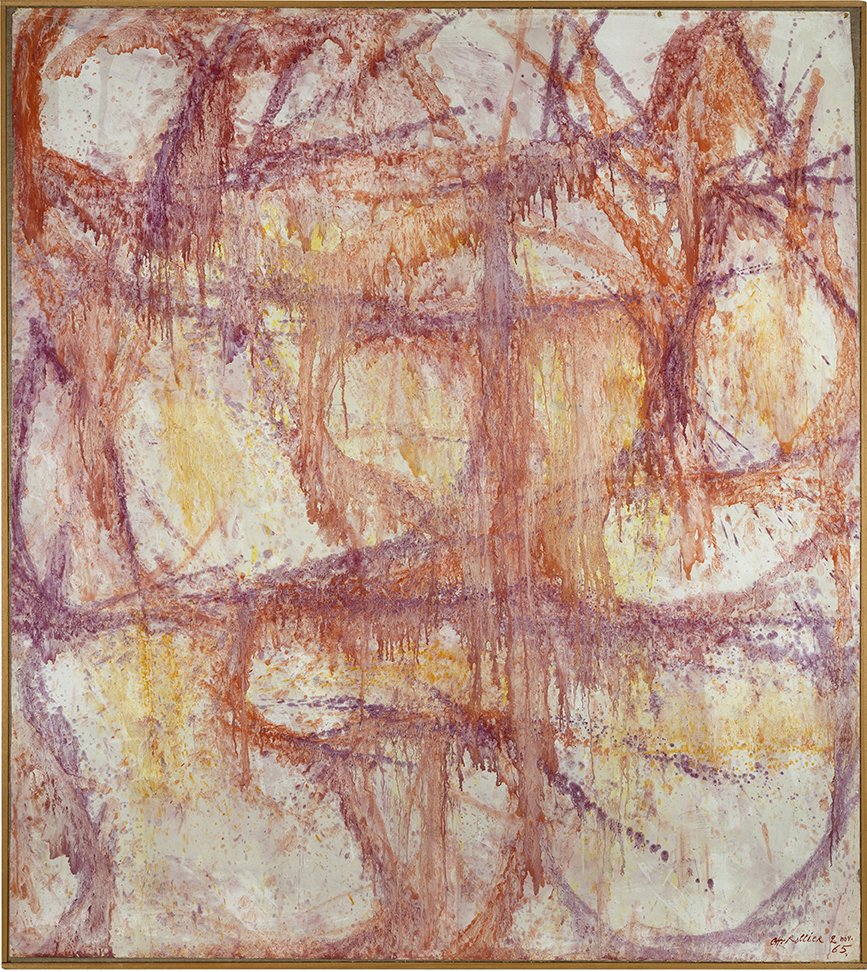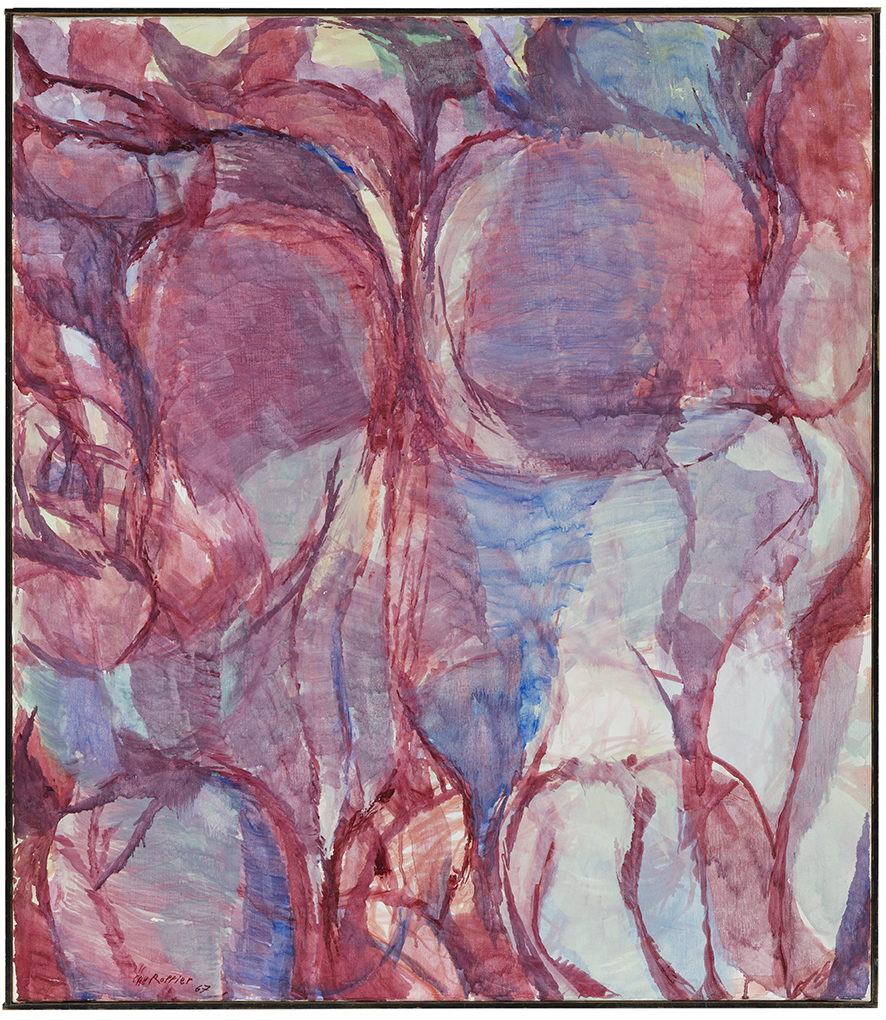Born in Milan in 1912 to an Italian family originally from Switzerland, Charles Rollier studied painting at the Brera Academy. Between Geneva and Paris, where he lived in the late 1930s, Rollier established friendships with numerous artists—such as Alberto Giacometti, Jean Bazaine and Nicolas de Staël—but he remained on the sidelines of groups and trends. Although his work could be characterised as informal art, Rollier rejected all qualifiers, particularly that of abstract painter.
His first works were figurative, but they already tended towards a simplification of form and a liberation of colour, borrowing cubist deconstruction and Cezannian strokes. In the mid-1950s, there was a shift that started his so-called “broussailles” period (meaning “undergrowth”; the French word is used to describe something bushy or tousled). Movement was amplified, the drawing was scratched and slashed, crossing the pictorial space with spontaneity.
This change went hand-in-hand with a personal journey, driven by the artist’s spiritual readings and revealed by an inner voice. Fascinated by Zen Buddhist thought and non-Western philosophies, his work never stopped striving to establish a link between art and spirituality, while revolving around the central figure of the woman—which Rollier perceived as an intermediary between humankind and the divine.
In the mid-1960s, his lines became contorted and brightly coloured with the help of a thin, liquid material. This was the “ondoiements” period (literally “undulations”). Rollier’s spellbinding painting conveyed a presence of the female figure—giver of life and source of vital energy—circumventing all trivial representation. Freed from any model, it followed its own mystical aspirations with complete authenticity, encouraging a profound reflection on the exceedance of representation.
A contemplative painter and philosopher, the artist kept a journal in which he described his work and thoughts. Though he retained an identity that was distinctive, unclassifiable and sometimes misjudged, Rollier regularly exhibited his work in Switzerland and abroad beginning in 1953. He was one of the representatives of Switzerland at the 1958 Venice Biennale. A major retrospective of his work was exhibited at the Musée Rath in 1969.
His first works were figurative, but they already tended towards a simplification of form and a liberation of colour, borrowing cubist deconstruction and Cezannian strokes. In the mid-1950s, there was a shift that started his so-called “broussailles” period (meaning “undergrowth”; the French word is used to describe something bushy or tousled). Movement was amplified, the drawing was scratched and slashed, crossing the pictorial space with spontaneity.
This change went hand-in-hand with a personal journey, driven by the artist’s spiritual readings and revealed by an inner voice. Fascinated by Zen Buddhist thought and non-Western philosophies, his work never stopped striving to establish a link between art and spirituality, while revolving around the central figure of the woman—which Rollier perceived as an intermediary between humankind and the divine.
In the mid-1960s, his lines became contorted and brightly coloured with the help of a thin, liquid material. This was the “ondoiements” period (literally “undulations”). Rollier’s spellbinding painting conveyed a presence of the female figure—giver of life and source of vital energy—circumventing all trivial representation. Freed from any model, it followed its own mystical aspirations with complete authenticity, encouraging a profound reflection on the exceedance of representation.
A contemplative painter and philosopher, the artist kept a journal in which he described his work and thoughts. Though he retained an identity that was distinctive, unclassifiable and sometimes misjudged, Rollier regularly exhibited his work in Switzerland and abroad beginning in 1953. He was one of the representatives of Switzerland at the 1958 Venice Biennale. A major retrospective of his work was exhibited at the Musée Rath in 1969.

